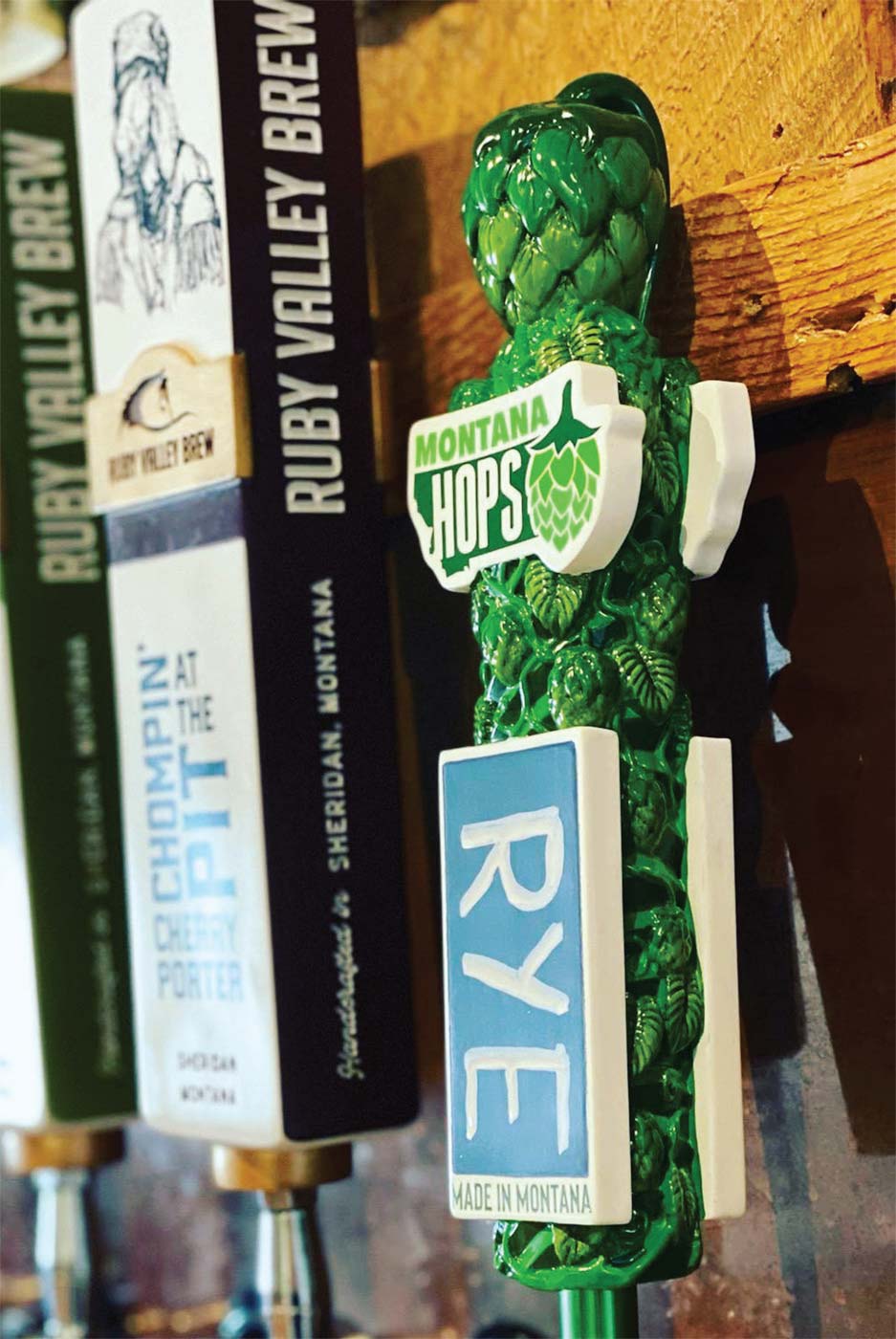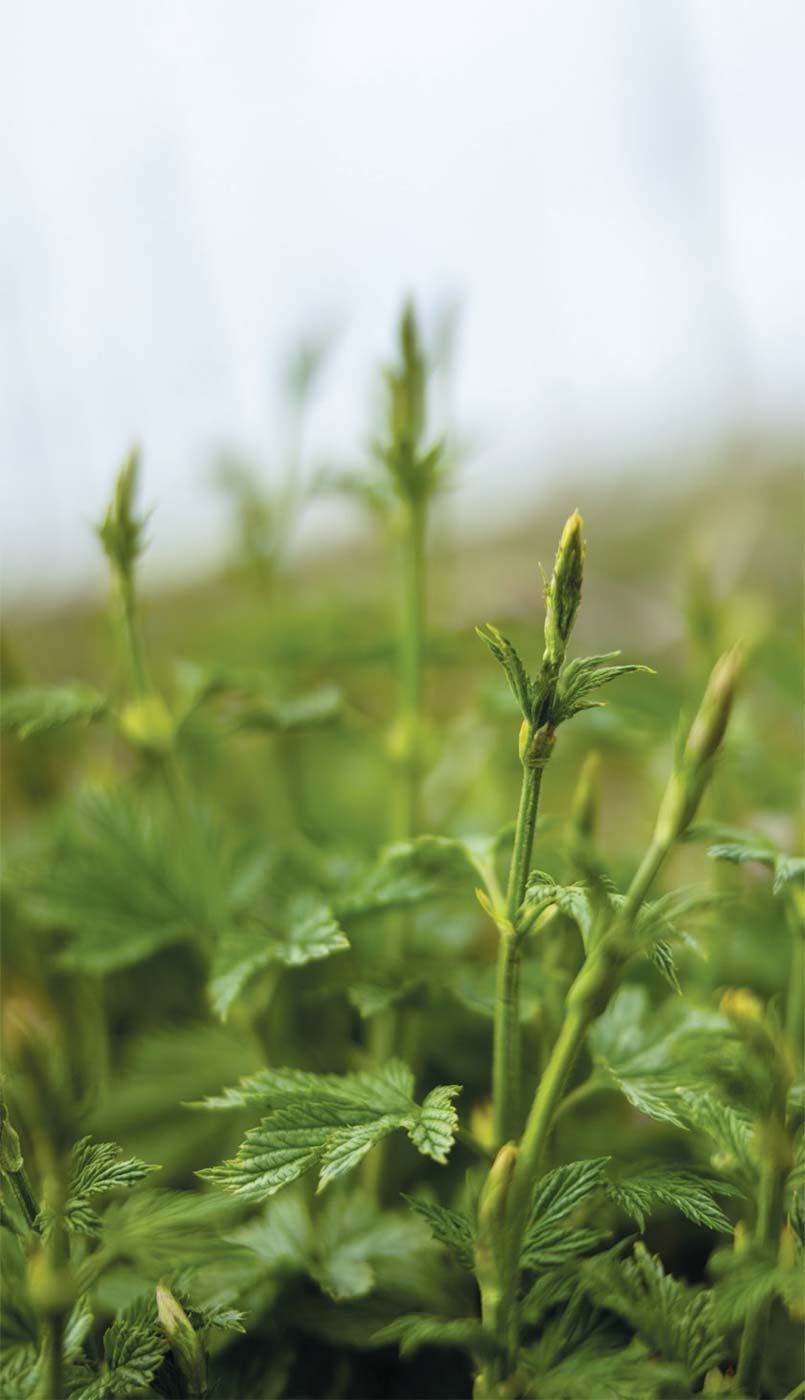The taste and aroma of many local Montana craft beers has made me wonder: Why is this beer noticeably malt-forward, not hop-forward? A potential reason: Montana is a national leader in the production of barley, one of the primary grains that go into the beer brewing process and the ingredient that lends its malty flavor. Hops, on the other hand, traditionally aren’t grown here, but that may be changing with the help of the U.S. Department of Agriculture’s Specialty Crop Block Grant designed to enhance the competitiveness of specialty crops in Montana.
Hops require large amounts of sunlight and do particularly well along the 49th parallel. Today, Washington State dominates the U.S. hops market, producing roughly 96 percent of the national harvest. The Montana climate, though within the 49th parallel, is noticeably different than those of industry leaders Washington, Idaho, and Oregon.
Hops, which provide a beer’s bitterness, balance, and specific aromatics, are of course only one of the key ingredients in beermaking. The others include grains like barley, wheat, rice, oats, and rye, which influence a beer’s distinctive flavor, aroma, and color; yeast, which acts as a catalyst for fermentation; and water, which, depending on its source and quality, can make a great impact on the taste of a beer.
Through trial and error, growers have found several hop varieties that grow well in Montana. They are clean and consistent, with a relatively middle-of-the-road flavor and aroma profile. Varieties include the publicly available Cascade, Centennial, Chinook, and Magnum hops, and earlier this year Gallatin Valley’s Crooked Yard Hops planted the newer Vista varietal. These aromatic hops were born out of USDA breeding programs conducted in Oregon. Other perhaps familiar- sounding hop varietals, including Mosaic®, Simcoe®, and Citra®, are privately developed, owned, and patented.
First released to the public in 1972, Cascade hops, in particular, were not adopted by the large, commercial breweries of the time. These highly aromatic, floral hops, full of citrus and pine notes, found great traction with craft brewers and were the essential cornerstone to launching the great American craft beer movement. Notably, Anchor Brewing Company’s Liberty Ale and Sierra Nevada Pale Ale, among others, relied on this new hop variety to usher in a revolution in American beermaking.


“In the past, there wasn’t much hop production in Montana,” says Doug Child, head brewer at MAP Brewing Company. “It’s really, really important for a Montana Craft Malt Certified brewery like ours to support our local Montana growing community. Now that the quality and production of locally grown hops has improved so significantly, it’s an easy choice to switch over to using more Montana hops. Th at’s especially true with COVID; given ongoing issues with the supply chain, shipping and freight costs, and quality control, using local Montana hops is a no-brainer.”
On April 6—dubbed “406 Day” in Montana—the Montana Brewers Association and 15 cooperating breweries, in collaboration with Montana barley growers, malt producers, and hops growers, released a special beer, one made entirely from Montana-grown ingredients. Named the Last Best Pale Ale, the beer incorporates state-grown hops. This is the second year of the collaboration and the 2022 brew is available on taps across the state.
Using ingredients from across Montana, each brewery leaves its mark on its own version of the brew by combining varying amounts, percentages, and varieties of those ingredients. As a limited-edition brew, the Last Best Pale Ale will only be available until the kegs run dry. Local breweries with a Last Best Pale Ale include MAP in Bozeman, Katabatic in downtown Livingston, and Burnt Tree in Ennis. Many breweries are already out of stock of Last Best in six-pack cans, but many can fill a 32-ounce Crowler™ while you wait.
This year’s Last Best Pale Ale is a crisp, clean, lightly hopped ale. It is light yellow in color with what suggests to be a slight haze as the beer settles post-pour. The versions I enjoyed hovered in the 5 percent or greater ABV, which keeps the drink light on the palate and the senses. The Last Best is a fantastic post-activity thirst-quenching alternative to a pilsner or lager to serve as your opening salvo of the session.
To further celebrate our hop harvest season of late summer and early fall, the popular Montana Fresh Hop Festival will yet again provide a highly unique opportunity to taste beers crafted with hops that are freshly picked that day. Usually, hops are turned into dried pellets and used in beermaking over time since hops lose their freshness soon after picking. But the Montana Fresh Hop Festival takes advantage of the day’s crop and the tiny window of opportunity to brew beer using only the day’s freshest hops. The flavors and aromas of truly fresh-harvested hops are like no other. This year’s Fresh Hop Festival is scheduled for October 15 at the Gallatin County Fairgrounds and will feature well over 30 breweries.
“Hop harvest here in Gallatin Valley is extremely weather dependent and the beers that are crafted same-day from freshly picked, local hops are really a special and unique opportunity to taste fresh and locally handmade beer,” says Jake TeSelle of Crooked Yard Hops. TeSelle is a fifth-generation farmer in Bozeman and grows hops used in the Last Best Pale Ale.
- For more information on any of the growers or brewers using Montana ingredients, visit your favorite brewer’s website or check out montana-hops.com. Alternatively, pull up a seat at just about any brewery in the state and just ask, “What’s pouring on the Montana hop tap today?”

